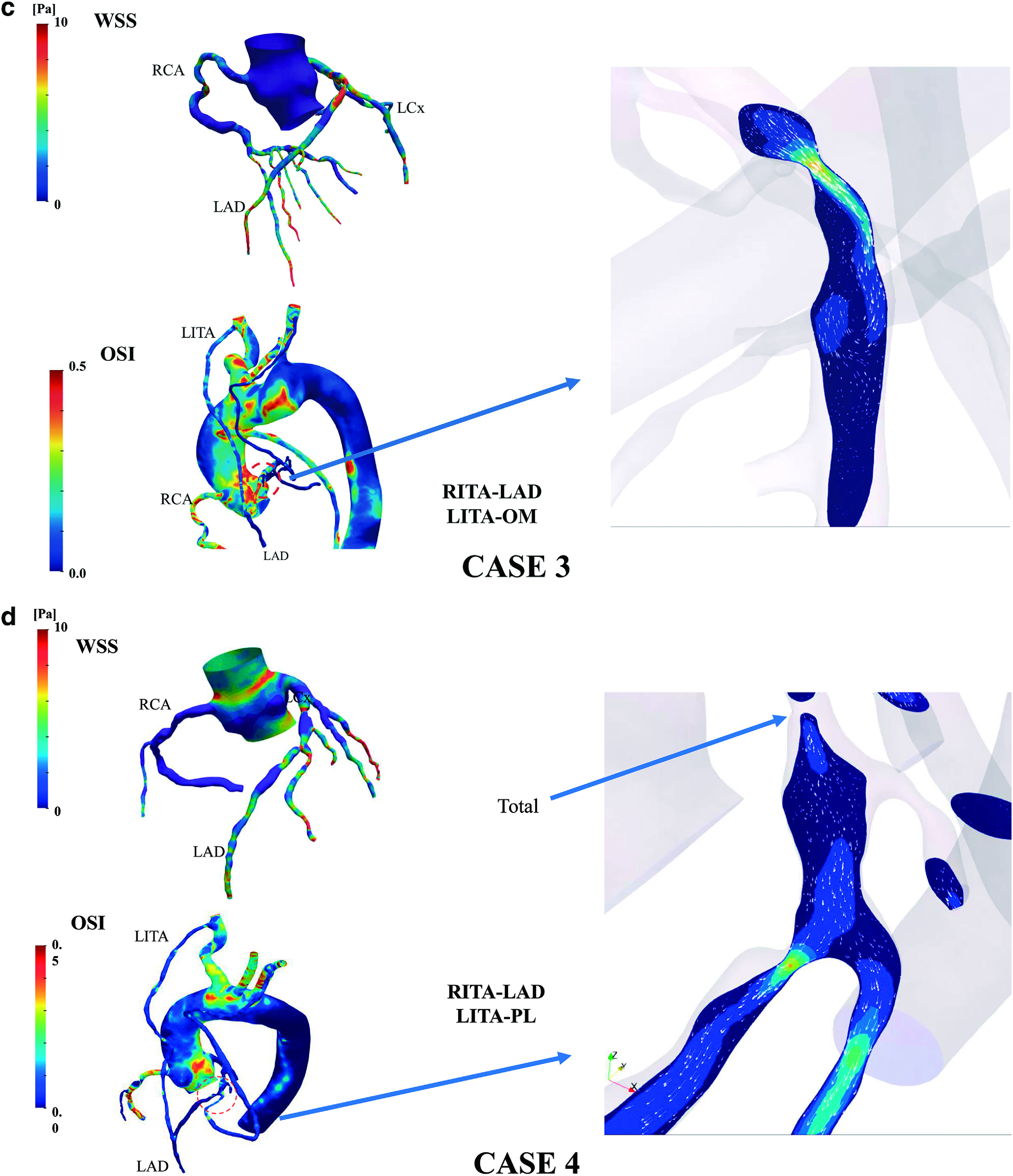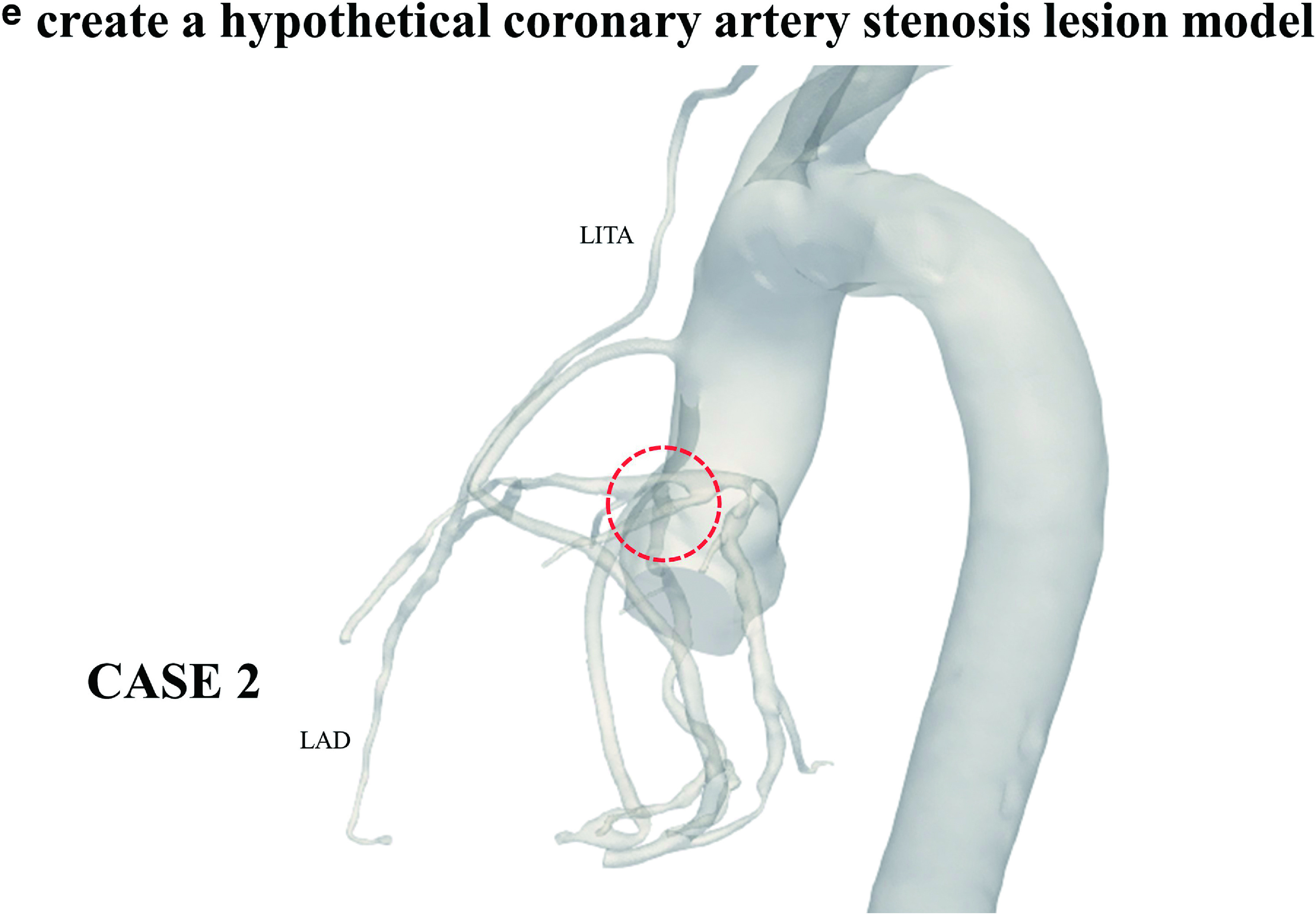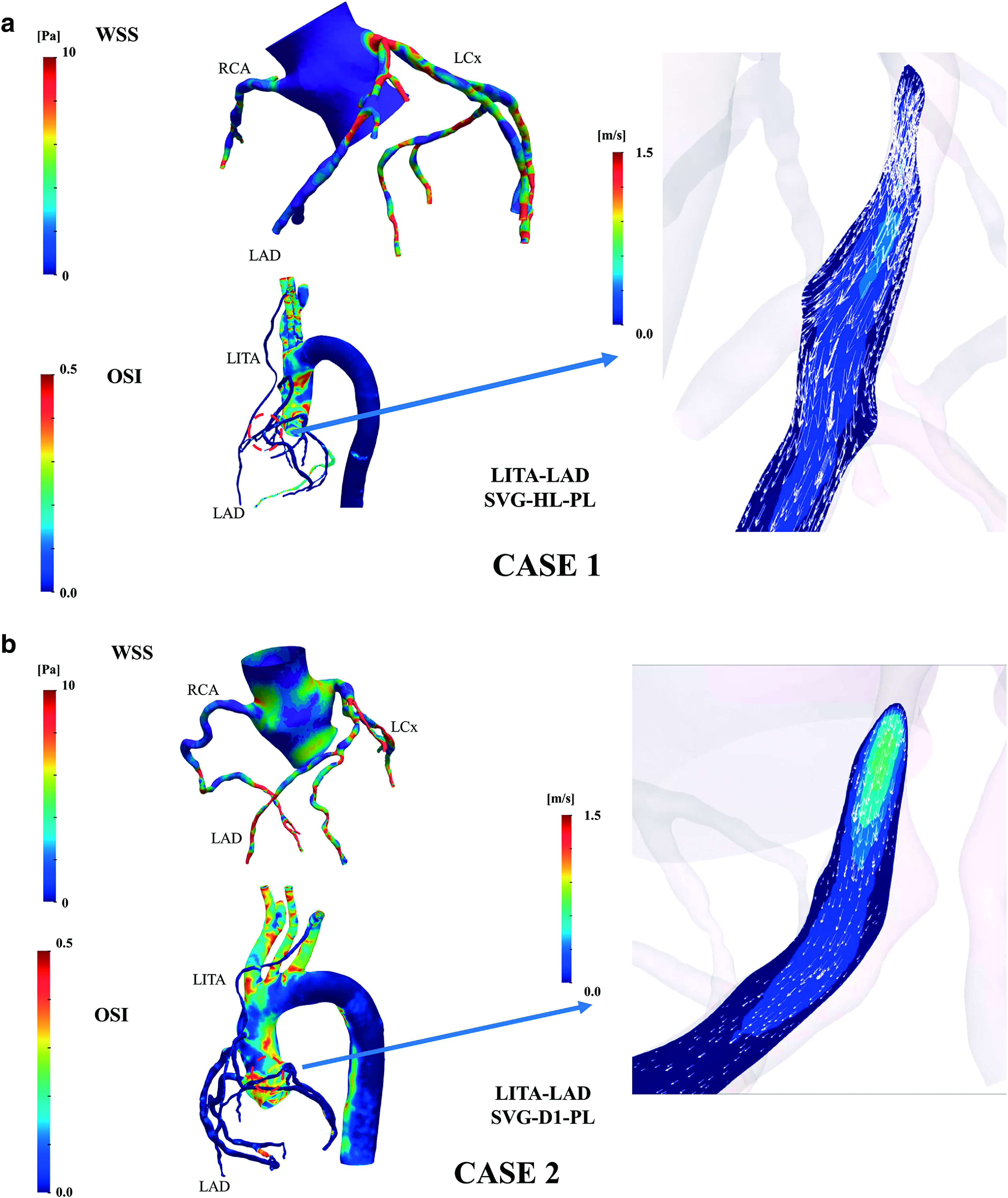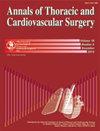Changes in Internal Thoracic Artery Blood Flow According to the Degree of Stenosis of the Anterior Descending Branch of the Left Coronary Artery.
IF 1.3
4区 医学
Q4 CARDIAC & CARDIOVASCULAR SYSTEMS
引用次数: 0
Abstract
Purpose: Computational fluid dynamics has enabled the evaluation of coronary flow reserve. The purpose of this study was to clarify the hemodynamic variation and reserve potential of the left internal thoracic artery (LITA). Methods: Four patients were selected on the basis of various native coronary stenosis patterns and graft design. The wall shear stress and oscillatory shear index were measured, and one patient was selected. Next, we created three hypothetical lesions with 75%, 90%, and 99% stenosis in front of the graft anastomosis, and compared the changes in LITA blood flow and coronary flow distribution. Results: In the 75% to 90% stenosis model, blood flow was significantly higher in the native coronary flow proximal to the coronary artery bypass anastomosis regardless of time phase. In the 99% stenosis model, blood flow from the LITA was significantly dominant compared to native coronary flow at the proximal site of anastomosis. The range of LITA flow variability was the largest at 99% stenosis, with a difference of 70 ml/min. Conclusion: The 99% stenosis model showed the highest LITA flow. The range of LITA flow variability is large, suggesting that it may vary according to the rate of native coronary stenosis.



胸内动脉血流随左冠状动脉前降支狭窄程度的变化。
目的:计算流体力学使冠状动脉血流储备的评估成为可能。本研究的目的是阐明左胸内动脉(LITA)的血流动力学变化和储备潜力。方法:根据不同的冠状动脉狭窄形态和移植物设计选择4例患者。测定了壁剪应力和振荡剪切指数,并选择1例患者。接下来,我们在移植物吻合口前分别假设狭窄程度为75%、90%和99%的病变,比较LITA血流量和冠状动脉血流分布的变化。结果:75% ~ 90%狭窄模型中,无论何时,冠状动脉搭桥吻合口近端的原生冠状动脉血流明显较高。在99%狭窄模型中,与吻合近端本地冠状动脉血流相比,LITA血流明显占优势。在99%狭窄时,LITA流量变异性范围最大,差异为70 ml/min。结论:99%狭窄模型LITA血流最高。LITA血流变异性的范围很大,表明它可能根据原生冠状动脉狭窄的发生率而变化。
本文章由计算机程序翻译,如有差异,请以英文原文为准。
求助全文
约1分钟内获得全文
求助全文
来源期刊

Annals of Thoracic and Cardiovascular Surgery
CARDIAC & CARDIOVASCULAR SYSTEMS-SURGERY
CiteScore
2.80
自引率
0.00%
发文量
56
审稿时长
4-8 weeks
期刊介绍:
Information not localized
 求助内容:
求助内容: 应助结果提醒方式:
应助结果提醒方式:


